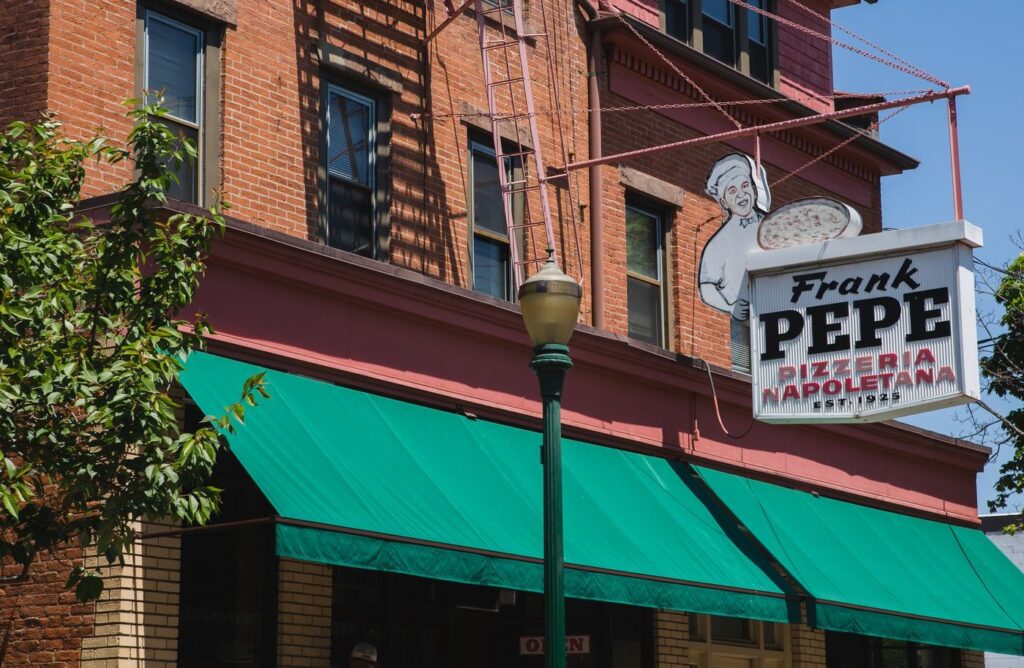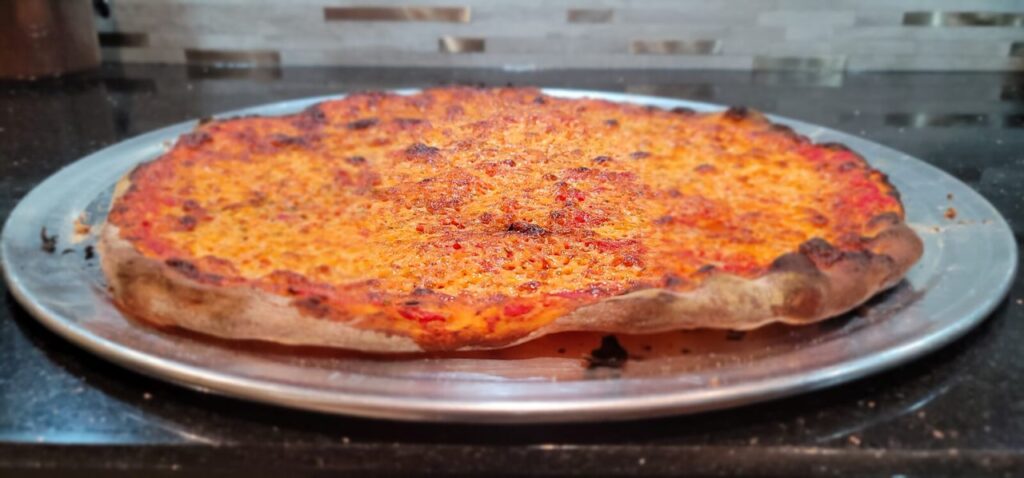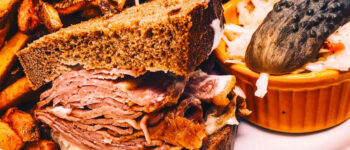If you’re a pizza lover, chances are you’ve heard of New York-style pizza or Chicago-style deep dish, but have you heard of New Haven-style pizza? This lesser-known style of pizza is a local favorite in the New Haven, Connecticut area and has been gaining popularity across the United States in recent years. In this article, we’ll take a look at the history of New Haven-style pizza and provide you with a recipe for making your own New Haven-style pizza dough at home.
History of New Haven Style Pizza
New Haven-style pizza, also known as apizza or a’pizza (pronounced “ah-BEETZ”), has its roots in the Italian-American community in New Haven, Connecticut. The first pizzeria in New Haven, Frank Pepe Pizzeria Napoletana, opened its doors in 1925 and remains a local favorite to this day. Frank Pepe, the restaurant’s founder, was born in Italy and brought his family’s pizza recipe with him when he emigrated to the United States in the early 1900s.

What sets New Haven-style pizza apart from other styles of pizza is its thin, crispy crust and slightly charred edges. The dough is made with a high-protein bread flour and cooked in a coal-fired oven at extremely high temperatures, which gives it its distinctive texture and flavor. The toppings are typically simple and traditional, with a focus on quality ingredients like fresh mozzarella, San Marzano tomatoes, locally sourced sausage, and “cupping” pepperoni.
See more : The Lifespan of Dry Ice and How To Make It Last
In addition to the traditional tomato sauce and cheese toppings, New Haven-style pizza can include unique toppings, such as white clams, bacon, and mashed potatoes. These unconventional toppings may sound strange to some, but they’re a beloved part of the New Haven pizza tradition.
Today, there are several pizzerias in New Haven that serve up delicious apizza, including Sally’s Apizza, Zuppardi’s Apizza, and Modern Apizza. Each of these restaurants has its own loyal following and unique spin on the classic recipe, but they all share a commitment to quality ingredients and traditional methods of preparation.
Now that you know a bit about the history of New Haven-style pizza, let’s dive into how to make it at home. While you may not have a coal-fired oven like the pizzerias in New Haven, you can still achieve a similar texture and flavor by following our recipe for New Haven-style pizza dough. It is highly recommended that you use a baking steel for this particular style of pizza, though a pizza stone will also work.
New Haven Style Pizza Recipe
Makes 3 dough balls (400g each), for three 15-16 inch pizzas

Ingredients*:
- 747g bread flour (100%)
- 500g water, room temperature (67%)
- 4g active dry yeast (0.5%)
- 17g sea salt (2.3%)
* Includes baker’s percentages
Why do we measure in grams? Measuring your ingredients in grams allows for more control and accuracy when replicating your dough recipe. Using a digital scale is recommended.
Instructions:
Dough Preparation
- Using a whisk, combine water and yeast in a small bowl or measuring cup.
- In a large mixing bowl, combine the bread flour and salt, and stir.
- Add water and yeast mixture to the large bowl of dry ingredients. Mix until the dough forms a shaggy mass.
- Allow dough to rest in the bowl for 20 minutes.
- Remove dough from bowl and portion into three 400g dough balls.
- How to video: Shaping dough balls
- Place each dough ball into a lightly oiled glass or plastic container with a lid, or seal with plastic wrap.
- Place in refrigerator and allow to cold ferment for a minimum of 48 hours, but 72-96 hours is preferred.
- The longer the cold fermentation period, the better taste and structure, as well as improved digestibility.
The secret to a great New Haven-style pizza is in the crust. The high-protein flour and coal-fired oven give the dough its distinctive texture and flavor, but with just a few key ingredients and the right tools, you can make your own delicious New Haven-style pizza at home.
If you’re ever in the New Haven area, be sure to visit one of the famous pizzerias and try a slice of authentic New Haven-style pizza. And if you’re feeling adventurous, try ordering a pie with some of the more unconventional toppings - you may be pleasantly surprised.
Nigel Gildon editor:Nigel Gildon is the editor of Chef Wayne’s Big Mamou: Chef Wayne’s Big Mamou. He has worked in the publishing industry for many years and has a passion for helping new authors get their work into the hands of readers. 63 Liberty Street * Springfield, MA 01003




